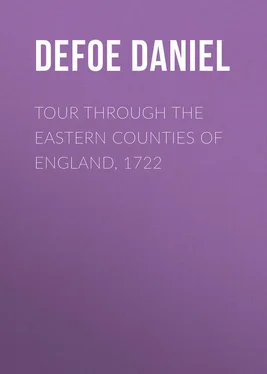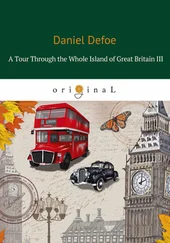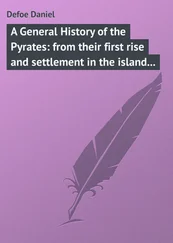Daniel Defoe - Tour through the Eastern Counties of England, 1722
Здесь есть возможность читать онлайн «Daniel Defoe - Tour through the Eastern Counties of England, 1722» — ознакомительный отрывок электронной книги совершенно бесплатно, а после прочтения отрывка купить полную версию. В некоторых случаях можно слушать аудио, скачать через торрент в формате fb2 и присутствует краткое содержание. Жанр: foreign_antique, foreign_prose, на английском языке. Описание произведения, (предисловие) а так же отзывы посетителей доступны на портале библиотеки ЛибКат.
- Название:Tour through the Eastern Counties of England, 1722
- Автор:
- Жанр:
- Год:неизвестен
- ISBN:нет данных
- Рейтинг книги:3 / 5. Голосов: 1
-
Избранное:Добавить в избранное
- Отзывы:
-
Ваша оценка:
- 60
- 1
- 2
- 3
- 4
- 5
Tour through the Eastern Counties of England, 1722: краткое содержание, описание и аннотация
Предлагаем к чтению аннотацию, описание, краткое содержание или предисловие (зависит от того, что написал сам автор книги «Tour through the Eastern Counties of England, 1722»). Если вы не нашли необходимую информацию о книге — напишите в комментариях, мы постараемся отыскать её.
Tour through the Eastern Counties of England, 1722 — читать онлайн ознакомительный отрывок
Ниже представлен текст книги, разбитый по страницам. Система сохранения места последней прочитанной страницы, позволяет с удобством читать онлайн бесплатно книгу «Tour through the Eastern Counties of England, 1722», без необходимости каждый раз заново искать на чём Вы остановились. Поставьте закладку, и сможете в любой момент перейти на страницу, на которой закончили чтение.
Интервал:
Закладка:
I mention this to observe how the present increase of wealth in the City of London spreads itself into the country, and plants families and fortunes, who in another age will equal the families of the ancient gentry, who perhaps were brought out. I shall take notice of this in a general head, and when I have run through all the counties, collect a list of the families of citizens and tradesmen thus established in the several counties, especially round London.
The product of all this part of the country is corn, as that of the marshy feeding grounds mentioned above is grass, where their chief business is breeding of calves, which I need not say are the best and fattest, and the largest veal in England, if not in the world; and, as an instance, I ate part of a veal or calf, fed by the late Sir Josiah Child at Wanstead, the loin of which weighed above thirty pounds, and the flesh exceeding white and fat.
From hence I went on to Colchester. The story of Kill-Dane, which is told of the town of Kelvedon, three miles from Witham, namely, that this is the place where the massacre of the Danes was begun by the women, and that therefore it was called Kill-Dane; I say of it, as we generally say of improbable news, it wants confirmation. The true name of the town is Kelvedon, and has been so for many hundred years. Neither does Mr. Camden, or any other writer I meet with worth naming, insist on this piece of empty tradition. The town is commonly called Keldon.
Colchester is an ancient corporation. The town is large, very populous, the streets fair and beautiful, and though it may not said to be finely built, yet there are abundance of very good and well-built houses in it. It still mourns in the ruins of a civil war; during which, or rather after the heat of the war was over, it suffered a severe siege, which, the garrison making a resolute defence, was turned into a blockade, in which the garrison and inhabitants also suffered the utmost extremity of hunger, and were at last obliged to surrender at discretion, when their two chief officers, Sir Charles Lucas and Sir George Lisle, were shot to death under the castle wall. The inhabitants had a tradition that no grass would grow upon the spot where the blood of those two gallant gentlemen was spilt, and they showed the place bare of grass for many years; but whether for this reason I will not affirm. The story is now dropped, and the grass, I suppose, grows there, as in other places.
However, the battered walls, the breaches in the turrets, and the ruined churches, still remain, except that the church of St. Mary (where they had the royal fort) is rebuilt; but the steeple, which was two-thirds battered down, because the besieged had a large culverin upon it that did much execution, remains still in that condition.
There is another church which bears the marks of those times, namely, on the south side of the town, in the way to the Hythe, of which more hereafter.
The lines of contravallation, with the forts built by the besiegers, and which surrounded the whole town, remain very visible in many places; but the chief of them are demolished.
The River Colne, which passes through this town, compasses it on the north and east sides, and served in those times for a complete defence on those sides. They have three bridges over it, one called North Bridge, at the north gate, by which the road leads into Suffolk; one called East Bridge, at the foot of the High Street, over which lies the road to Harwich, and one at the Hythe, as above.
The river is navigable within three miles of the town for ships of large burthen; a little lower it may receive even a royal navy; and up to that part called the Hythe, close to the houses, it is navigable for hoys and small barques. This Hythe is a long street, passing from west to east, on the south side of the town. At the west end of it, there is a small intermission of the buildings, but not much; and towards the river it is very populous (it may be called the Wapping of Colchester). There is one church in that part of the town, a large quay by the river, and a good custom-house.
The town may be said chiefly to subsist by the trade of making bays, which is known over most of the trading parts of Europe by the name of Colchester Bays, though indeed all the towns round carry on the same trade – namely, Kelvedon, Witham, Coggeshall, Braintree, Bocking, &c., and the whole county, large as it is, may be said to be employed, and in part maintained, by the spinning of wool for the bay trade of Colchester and its adjacent towns. The account of the siege, A.D. 1648, with a diary of the most remarkable passages, are as follows, which I had from so good a hand as that I have no reason to question its being a true relation.
On the 4th of June, we were alarmed in the town of Colchester that the Lord Goring, the Lord Capel, and a body of two thousand of the loyal party, who had been in arms in Kent, having left a great body of an army in possession of Rochester Bridge, where they resolved to fight the Lord Fairfax and the Parliament army, had given the said General Fairfax the slip, and having passed the Thames at Greenwich, were come to Stratford, and were advancing this way; upon which news, Sir Charles Lucas, Sir George Lisle, Colonel Cook, and several gentlemen of the loyal army, and all that had commissions from the king, with a gallant appearance of gentlemen volunteers, drew together from all parts of the country to join with them.
The 8th, we were further informed that they were advanced to Chelmsford, to New Hall House, and to Witham; and the 9th some of the horse arrived in the town, taking possession of the gates, and having engineers with them, told us that General Goring had resolved to make this town his headquarters, and would cause it to be well fortified. They also caused the drums to beat for volunteers; and a good number of the poor bay-weavers, and such-like people, wanting employment, enlisted; so that they completed Sir Charles Lucas’s regiment, which was but thin, to near eight hundred men.
On the 10th we had news that the Lord Fairfax, having beaten the Royalists at Maidstone, and retaken Rochester, had passed the Thames at Gravesend, though with great difficulty, and with some loss, and was come to Horndon-on-the-Hill, in order to gain Colchester before the Royalists; but that hearing Sir Charles Lucas had prevented him, had ordered his rendezvous at Billerecay, and intended to possess the pass at Malden on the 11th, where Sir Thomas Honnywood, with the county-trained bands, was to be the same day.
The same evening the Lord Goring, with all his forces, making about five thousand six hundred men, horse and foot, came to Colchester, and encamping without the suburbs, under command of the cannon of St. Mary’s fort, made disposition to fight the Parliament forces if they came up.
The 12th, the Lord Goring came into Colchester, viewed the fort in St. Mary’s churchyard, ordered more cannon to be planted upon it, posted two regiments in the suburbs without the head gate, let the town know he would take them into his Majesty’s protection, and that he would fight the enemy in that situation. The same evening the Lord Fairfax, with a strong party of one thousand horse, came to Lexden, at two small miles’ distance, expecting the rest of his army there the same night.
The Lord Goring brought in prisoners the same day, Sir William Masham, and several other gentlemen of the county, who were secured under a strong guard; which the Parliament hearing, ordered twenty prisoners of the royal party to be singled out, declaring, that they should be used in the same manner as the Lord Goring used Sir William Masham, and the gentlemen prisoners with him.
On the 13th, early in the morning, our spies brought intelligence that the Lord Fairfax, all his forces being come up to him, was making dispositions for a march, resolving to attack the Royalists in their camp; upon which, the Lord Goring drew all his forces together, resolving to fight. The engineers had offered the night before to entrench his camp, and to draw a line round it in one night’s time, but his lordship declined it, and now there was no time for it; whereupon the general, Lord Goring, drew up his army in order of battle on both sides the road, the horse in the open fields on the wings; the foot were drawn up, one regiment in the road, one regiment on each side, and two regiments for reserve in the suburb, just at the entrance of the town, with a regiment of volunteers advanced as a forlorn hope, and a regiment of horse at the head-gate, ready to support the reserve, as occasion should require.
Читать дальшеИнтервал:
Закладка:
Похожие книги на «Tour through the Eastern Counties of England, 1722»
Представляем Вашему вниманию похожие книги на «Tour through the Eastern Counties of England, 1722» списком для выбора. Мы отобрали схожую по названию и смыслу литературу в надежде предоставить читателям больше вариантов отыскать новые, интересные, ещё непрочитанные произведения.
Обсуждение, отзывы о книге «Tour through the Eastern Counties of England, 1722» и просто собственные мнения читателей. Оставьте ваши комментарии, напишите, что Вы думаете о произведении, его смысле или главных героях. Укажите что конкретно понравилось, а что нет, и почему Вы так считаете.












